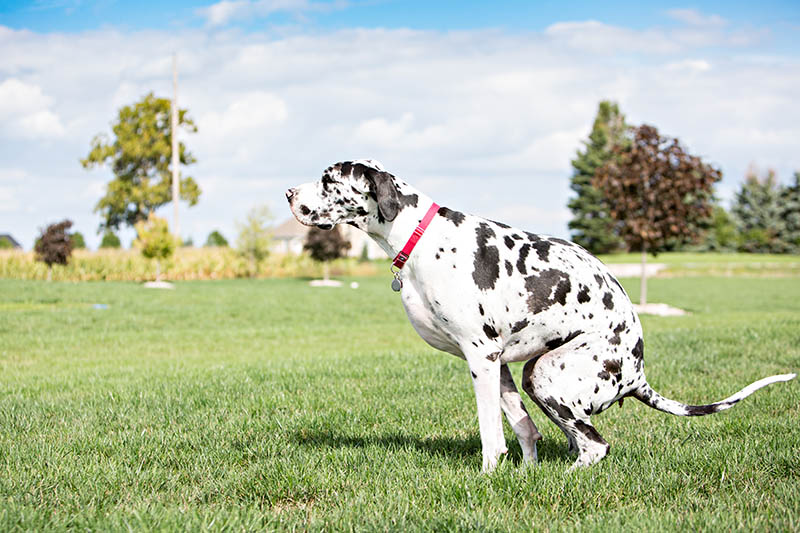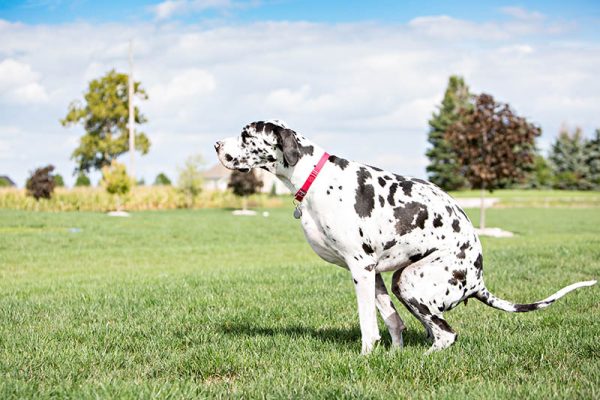Potty training might be one of the most complicated things you can go through with your puppy. The process usually takes forever, and you might have setbacks along the way. However, Great Danes are incredibly intelligent dogs that can easily pick up on concepts.
Since Danes are huge, even as puppies, you’ll want all the waste on your lawn—and not your carpet. So, here’s a speedy way for them to learn how to go where they should! This joint effort will set the foundational blocks for your relationship, as it teaches obedience, patience, and reward.
How to Potty Train a Great Dane
1. Don’t Start Off with Pee Pads
The whole goal of potty training is to teach your dog to go outside and not on your floor. Pee pads are marketed to puppies—and some dogs can never kick the habit. So, it’s important not to start this type of training with your Dane.
If you had the choice between going to your ever-so-convenient bathroom to do your business or going to an outhouse outside, which do you think you’d choose? Of course, modern conveniences are easier for us—and it’s no different for your dog.
If you get your puppy started on using the bathroom in the house, you’ll have to break that bad habit eventually. So, even though they might be convenient for you too (at first), eventually, it will become a giant headache later.
Some dogs might exclusively use puppy pads throughout their lives (such as Chihuahuas and some Toy breeds.) Unlike smaller breeds with tiny bladders, your Dane can hold it longer than other pups.
So, we definitely suggest cutting out the step entirely.
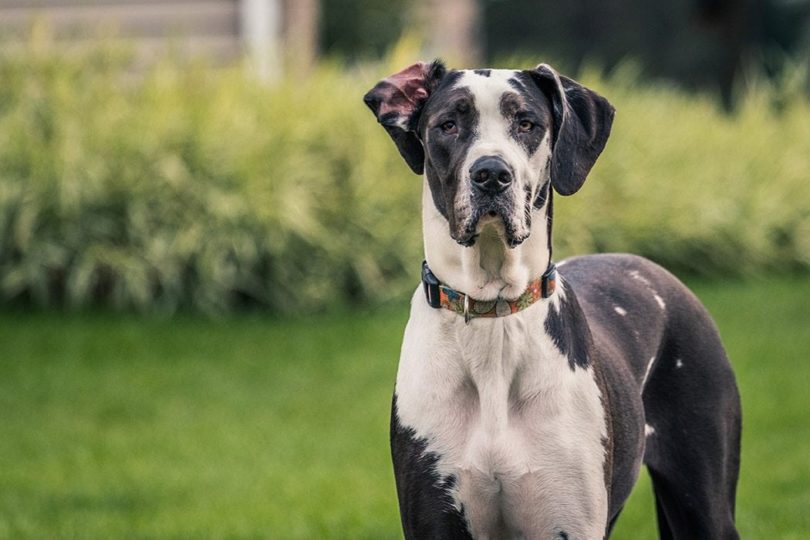
2. Acquaint Them with Home
Bringing home your pup is going to be a big change for everyone. Your Dane is leaving its mother and littermates for the first time and entering a totally new environment. It’s a very scary change, even if they seem to be taking it like a champ.
Your home will be filled with new and exciting sights and smells. They will want to explore everything and maybe pee and poop wherever they are. To combat this, it’s best to puppy-proof your home before bringing them home.
Close off unnecessary rooms, use crates, and supervise whenever they are loose. You can buy useful items to separate areas of your home like baby gates and other obstructions.
3. Use a Kennel or Crate
The fact is—all dogs require a “den.” It’s just in their nature. Because having this place to relax, sleep, or escape is such a sanctuary for your dog, it’s an excellent additive to any home. But crates can also be lifesavers during the potty-training phase.
Your puppy should only have access to the home when you are there to supervise. Crates and kennels can be an excellent way to contain the puppy—and make them feel warm, cozy, and safe when you aren’t there.
You should never use a crate as a tactic for punishment. If your pup is punished by being placed in a crate, it will associate the cage with negativity. However, if you use it as a safe place to rest when they are alone, it’s a fantastic way to create a comfort zone.
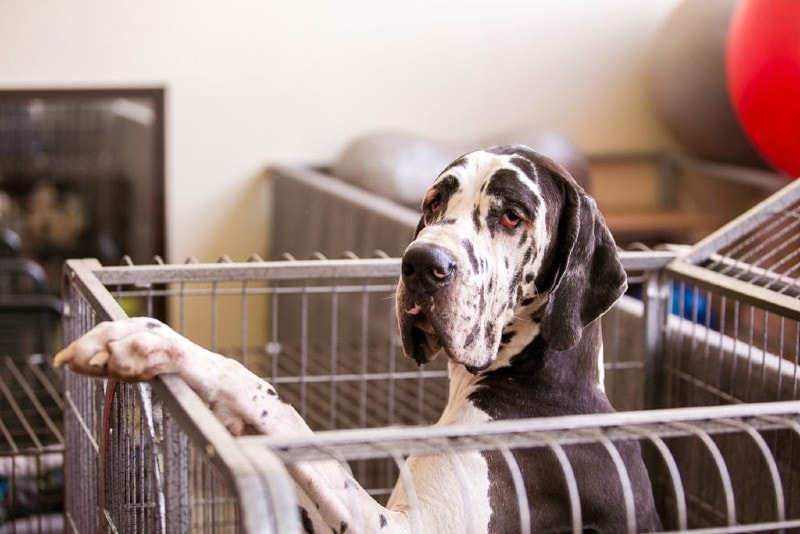
4. Pick a Training Method & Stick to It
Everyone will vary slightly in training method—that’s just part of the lifestyle and personalization of having a pup. Some folks use a bell on the door for their pup to ring, letting them know it’s time to potty. Others use a strictly timed schedule, particular vocabulary, and praise methods—it’s all up to you.
But once you choose how you would like to teach your dog, be consistent every day. One miss in the madness can cause a setback or regression with progress (and you don’t want that!)
So, after reviewing a few different methods, decide on one, and operate on that routine consistently.
5. Get a Proper Harness, Collar, & Lead
Teaching your dog to walk on a lead is another rudimentary task. It’s something that you will start as soon as you bring your dog home. Having a reliable harness, lead, and collar will give you peace of mind, knowing your dog will be well-secured on your outings.
This is especially important if you need a fenced-in area. One slip from the attachment and your pup could bolt into dangerous territories.
Measure your dog appropriately before ordering any of this equipment. Check the sizing chart for each product to ensure it matches your selected size. Each harness will vary slightly, and you won’t want to fuss with returning the harness if it doesn’t fit.
There are tons of safe harnesses, lead, and collars on sites like Amazon and Chewy. There’s one in virtually any color and material that you can think of. Explore your options today.
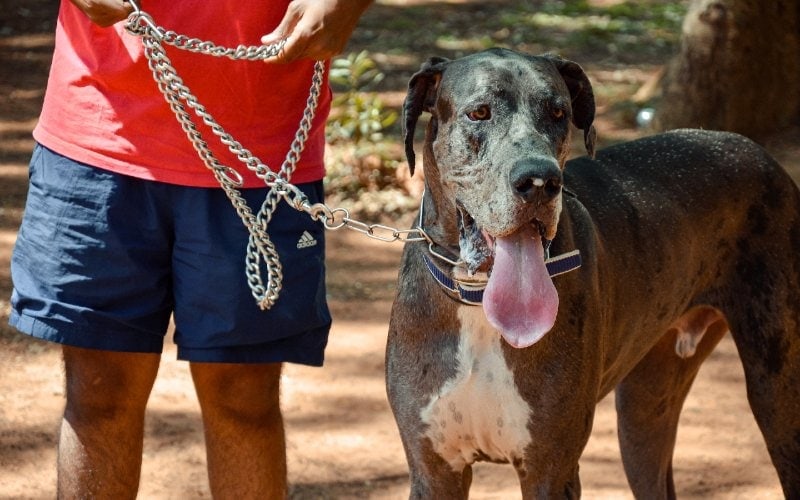
6. Pick a Potty Spot
You’ll want to pick a spot where your dog can automatically associate pottying with the area. For example, if you have a specific corner of your yard or a routine tree that you visit, you will want your dog to relate the area to the action.
Only visit this place if your dog wants to do their business. If you clean up your dog’s waste in the area, leave some remnants behind so they can associate the smells with potty time.
Soon, this will become a routine. Your dog will simply know this is where they go, and you will be able to scoop the entire area.
7. Feed Your Pup at the Same Time Daily
Feeding your pup at the same time every day makes it easier to predict when your dog will use the bathroom.
Once you have a general idea of how long it takes from the time your dog eats to a bowel movement, you can act accordingly.
This is a really good tactic to use when you’re teaching bathroom habits, but it’s also good to get them into a feeding routine in general. Having a routine set up allows them to be secure and know what to expect for the day. They are well aware that they are getting dinner at a specific time and rest assured, they will hold you to it.
Lastly, it helps with digestion. You’re giving your dog a set amount of food between 1 and 3 times a day, regulating their digestive system.
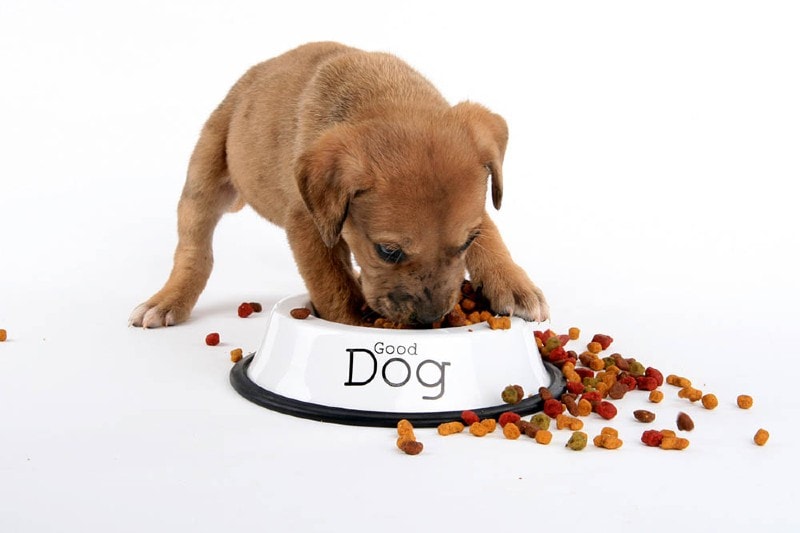
8. Look for Body Language and Signs
You can usually tell your pup is getting ready to do their business when they start sniffing around. It can be very brief, unlike it usually is when they’re adults.
Your puppy will likely display similar behaviors every single time they need to go. So, once you learn your puppy’s specific cues, that’s when you can get a few steps ahead of it.
9. Use a Consistent Phrase
Different folks use various command words for going to the potty. Some say “outside.” Others say, “Go potty”—it really doesn’t matter what signal you come up with. Please keep it simple, between 1 and 2 words, to reduce any confusion.
You can even repeat the phrase while you’re outside, so they consistently relate the word to the experience.
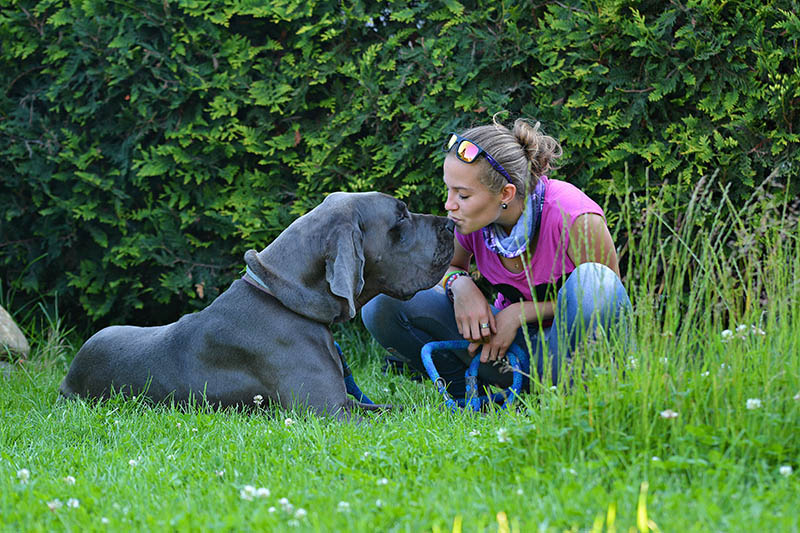
10. Celebrate with Treats and Praise
Always reward your puppy for a job well done. A dog learns far better with acceptance and celebration than with disdain. Your energy will pep them up. And if you know anything about Danes, you know how much they seek approval from owners!
The Importance of Patience & Consistency
Your dog counts on you to navigate through their younger years. You’ll want this experience to build you up rather than create a fearful bond between you and your animal. Keep in mind that most dogs want nothing more than to please their owners.
So even though they might be intentionally frustrating from time to time, it’s not the case. Showing patience and consistency will give your dog a secure foundation, making them turn into mannerly, loyal companions to every household member.
And keep in mind that potty training is taxing for pet parents. It might seem like it will never end. But we assure you, you’re already halfway through it and farther along than you may think. Pretty soon, this will be but a fragment of the memory you share with your dog. Much more rewarding memories have yet to happen.
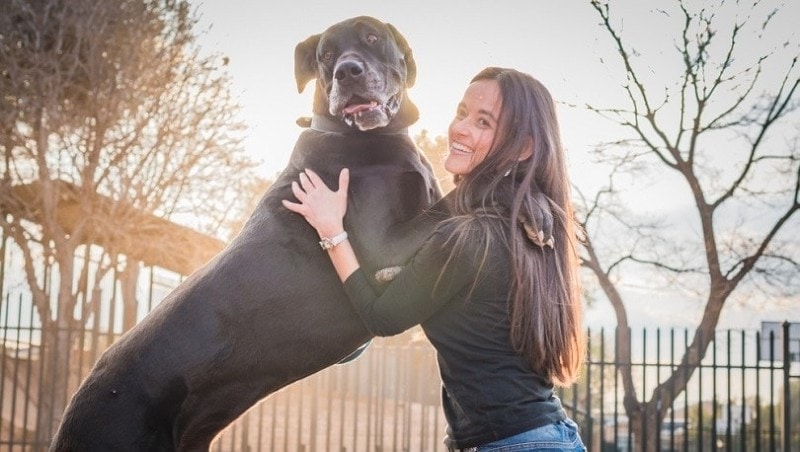
Avoid Harsh Punishments
The last thing you want is for your dog’s juvenile stages to be riddled with fear and anxiety. These emotions can impact behavior on many levels. Distraction and aggression are two of the most critical areas of focus on the subject.
If you spank, scream, or aggressively punish your dog, it’s going to create distrust and imbalance in the relationship. If your dog feels that you are unpredictable or dangerous, they might share the same suspicion with other people.
This could impact the way that they treat strangers and even other animals. Also, if your pet consistently fears you for punishing them, it can manifest in other poor behaviors such as excessive barking, chewing, destroying, and other neurotic behaviors.
Even if you’re not feeling upbeat, try not to let it show. Reward your puppy for a job well done and let them know when they have done a bad thing. Both of these reactions can come from a place of love and understanding.
If you’re having trouble training your dog, professional help is available at every turn. Don’t be afraid to speak with your veterinarian about options or talk to a dog training professional for tips, tricks, or classes.
Summary
Potty training is a relatively simple concept. Even though you can make training complex and get into several different methods before finding a niche, all paths lead to the same result. Eventually, your Dane will be using the potty like a big boy or girl.
Remember, this is the time to be consistent and kind—it’s a foundational block between you and your pup. Just stay on track and make sure to pay attention to body language. But most of all, have patience in the process.
Featured Image Credit: Victoria Rak, Shutterstock
Contents
- How to Potty Train a Great Dane
- 1. Don’t Start Off with Pee Pads
- 2. Acquaint Them with Home
- 3. Use a Kennel or Crate
- 4. Pick a Training Method & Stick to It
- 5. Get a Proper Harness, Collar, & Lead
- 6. Pick a Potty Spot
- 7. Feed Your Pup at the Same Time Daily
- 8. Look for Body Language and Signs
- 9. Use a Consistent Phrase
- 10. Celebrate with Treats and Praise
- The Importance of Patience & Consistency
- Avoid Harsh Punishments
- Summary

